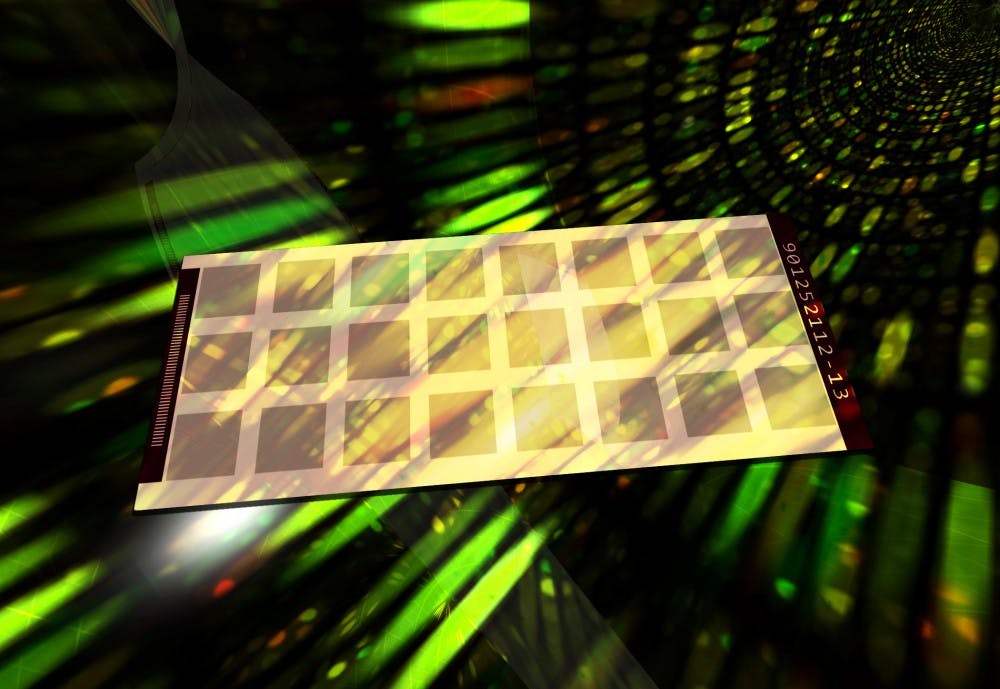 An artistic rendition of the arrays that are used and spots that are used for diagnosis on the arrays. (Image courtesy of Stephen Johnston)
An artistic rendition of the arrays that are used and spots that are used for diagnosis on the arrays. (Image courtesy of Stephen Johnston)Biodesign professor Phillip Stafford and a team of ASU researchers have found a revolutionary technique for identifying signs of cancer well before patients become sick.
Randomly composed amino acid chains called peptides are used to create an immunosignature that can identify diseases in the blood.
Stafford said the peptides are completely random and aren’t based on anything in particular, but antibodies in the blood will bond with peptides that are similar to a disease.
With an average diagnostic accuracy of over 98 percent, the immunosignature process has enabled researchers to identify more than 14 different diseases.
“This wasn’t initially about early detection,” Stafford said. “We want to find out whether we can discover disease before you get sick.”
The researchers planned to find ways to detect disease before external symptoms developed.
The success of the first rounds of research enabled the team to receive a grant from the Department of Defense to begin their next round of investigation.
Stafford said the next round will involve using blood samples taken from patients who donated blood up to a year or two before receiving a cancer diagnosis.
In the coming research, Stafford said one of two things can happen. Either the researchers find that diseases will have a uniform immunosignature pattern across a number of patients, or patients will have a unique and personal immunosignature.
“If your signature doesn’t look like everyone else’s, you have a baseline,” Stafford said. “If you get a disease, that baseline will start to change.”
Stafford stressed that not all diseases are the same, and that the team is keeping its options open.
At this point, the research has been able to identify diseases up to six months early, and the next round of research might enable the team to identify them even earlier than that.
Professor Stephen Johnston, co-director of the Center for Innovations in Medicine and co-author of the research paper, said the research up to this point has been addressing the question of whether the technology could differentiate between diseases.
"We found out that we can, and it's sort of a tour de force because no one else can do that sort of analysis," Johnston said. "Now the question is, 'How early can you do that?'"
Johnston said there is indication from mouse models that diseases like Alzheimer's and breast cancer can be identified well in advance.
“We’re still looking for ways to get this in peoples’ hands,” Stafford said.
Stafford said the research team has contacted the Food and Drug Administration for advice.
“We reached out to the FDA expecting a negative reply, but they were pretty OK with it,” Stafford said. “They gave us good suggestions.”
Johnston said the technology is simple, which drew questions.
"In biology you don't expect things to be simple," he said. "People thought it was too good to be true."
Both professors agreed that the aim moving forward is to make the technology available to the public.
"The goal here is that people will regularly donate a drop of blood through their physician or directly to the center, and that drop of blood will be used comprehensively to test their health status on a regular basis," Johnston said.
Reach the reporter at icbeck@asu.edu and follow him on Twitter @ICBeck21.




